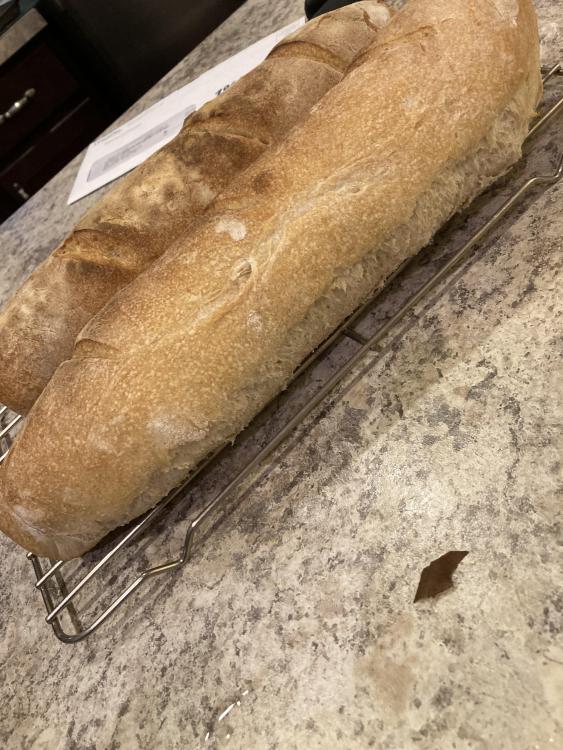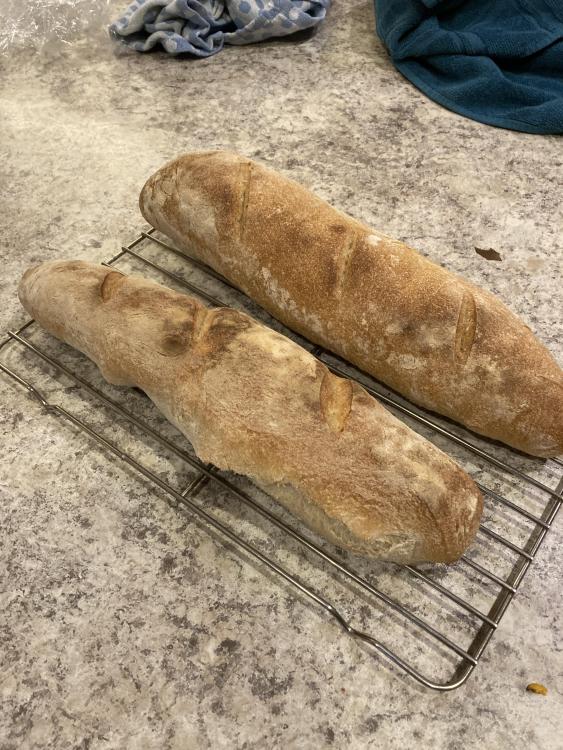On 7/10/2021 at 6:41 PM, Matthew.Taylor said:
I agree with JoNorvelle in every way - these look delicious and I'm sure they were. Baguettes are not easy - there are people I know who work entirely on them in the hopes of mastering their particular breads. Shaping can be difficult, scoring can be difficult to get down consistently, the crust and crumb - all things that take practice. Just some questions.
How hot are you baking? How much total time? What's your recipe? Do you have a means to introduce steam?
Edit: I see I've missed several posts - will go back over.
Steam isn't used during an entire bake (another miss. Sorry Jo. As JoNorvelle said). It is used to gelatinize starch granules at the dough surface which does several things. Gelatinization is nothing more than the uptake of moisture by starch granules, and when they swell so much they burst, they essentially increase the "skin" extensibility - this allows your dough to expand, and consequently also allows the alveoli, the holes in your crumb, to expand as well.
Secondly, it exposes those starches to saccharification, and during the "dry" phase of the bake, this leads to maillard reactions - the interaction between sugar and proteins that gives you a wonderful browned, crispy crust.
In order for this to happen, the moisture needs to be evaporated or vented in some way. As a general rule, and it's truly variable - and it depends on if we're talking rye or wheat breads - but for wheat breads, roughly 1/3 of the total bake time is given steam. The remainder is baked dry. For baguettes taking 25-30 minutes, you can steam 8-10 minutes, then the rest, dry.
Steam is the eternal challenge in home ovens, particularly gas ovens that vent for safety purposes. I want to make sure I'm not duplicating others' thoughts so will take a look above before going further.







